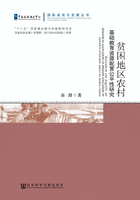
Abstract
Given the fundamental status,equity of primary education is the foundation in promoting social development in a harmonious way. Allocation of education resources between urban and rural area is the most essential component for a balanced situation of primary education. There is a ‘trade-off’ between equity and efficiency about provision of public goods,causing a tough challenge for government to decide whether to allocate resources to urban or to rural area. Especially,the migrating flow has been growing rapidly and changing from the workers only to the workers’ family since the early 90s of the 20th century,which tends to strengthen the provision problem. Rural residents who are lack of ‘Capacity’ to have access to obtain basic public services,such as primary education,will encounter unequal competition,blocking social mobility and exacerbating the state of urban-rural disparities. Thus,this paper aims at analyzing the current main difficulties in the angle of equal and efficiency about allocating the education resources between urban and rural area in the context of massive mobility of labor force,and attempts to figure out a feasible way to balance public provision and allocation of resources of primary education between urban and rural area. Based on the aim mentioned above,this research contains contents and conclusions as follows:
(1)The research analyzes the transformation of the financial policy for the primary education through three decades,summarizing the influences of the population mobility on allocation of education resources for the urban and rural area. Analysis shows that under the circumstance of urban-rural division,the fact population migrant from countryside to city or town has raised new challenges to the allocation of education resources. This paper focuses on county level,demonstrating government not only needs to remove the barricades for population mobility and accelerate the urban-rural fusion on the aspect of institutional support,but should also focus on the equity of the primary education for the vulnerable groups in rural area.
(2)Through combining the statistic data and the material collected from field research with related cases,the study describes the inequity situation within rural and between urban and rural areas since 2001,puts forward the hypothesis that local government’s behavior is oriented by efficiency,and verifies it with the panel data of 30provinces in 1998-2010. The result shows that pursuing achievement in the level of urbanization,limitation of fiscal ability and preference about expenditure are the real incentives to push local governments to implement the policy in a large-scale extent to rural primary school.
(3)This paper investigates effect factors of the expense on children’s primary education and financial burden in rural family. Based on the County-level data collected from field research in Henan and Gansu province,verifies income level was a determinant of migration choice of rural families. These conclusions reveals that the inadequate capacity leads to the limitation of free choosing,causing the substantial inequity,which aggravate the inequity in acquisition of public resources among vulnerable groups in rural areas according to Sen’s capacity and entitlement theory and the description of urban-rural disparities on funds level,school conditions and faculty in current China.
(4)This study also reviews the fiscal system of education and the mechanism of fund raising,incorporating with local government’s behavior preference theory. Through estimating the provincial-level panel data from 2000 to 2010 in Mainland China,the result investigates a Crowd-out effect between budgetary and extra-budgetary expenditures per capital for elementary education in rural areas,and reveals different relevancies between Extrabudgetary and per capita revenue of local government in general spending and personnel spending. Local government privileges personnel expenditure,which puts general expenditure ata higher risk to inadequacies in rural elementary finance schools. Accordingly,the author provides the policy suggestion of “adopting the stimulating mechanism to encourage the local government to increase the investment on the general expenditure,and strictly control the ratio between the expense between budgetary and extra-budgetary”. In the meanwhile,this research serves as a reference for adjusting other public services in the process of Chin Finally,the author summarizes the research and proposes related policy suggestions and the approach for further study.